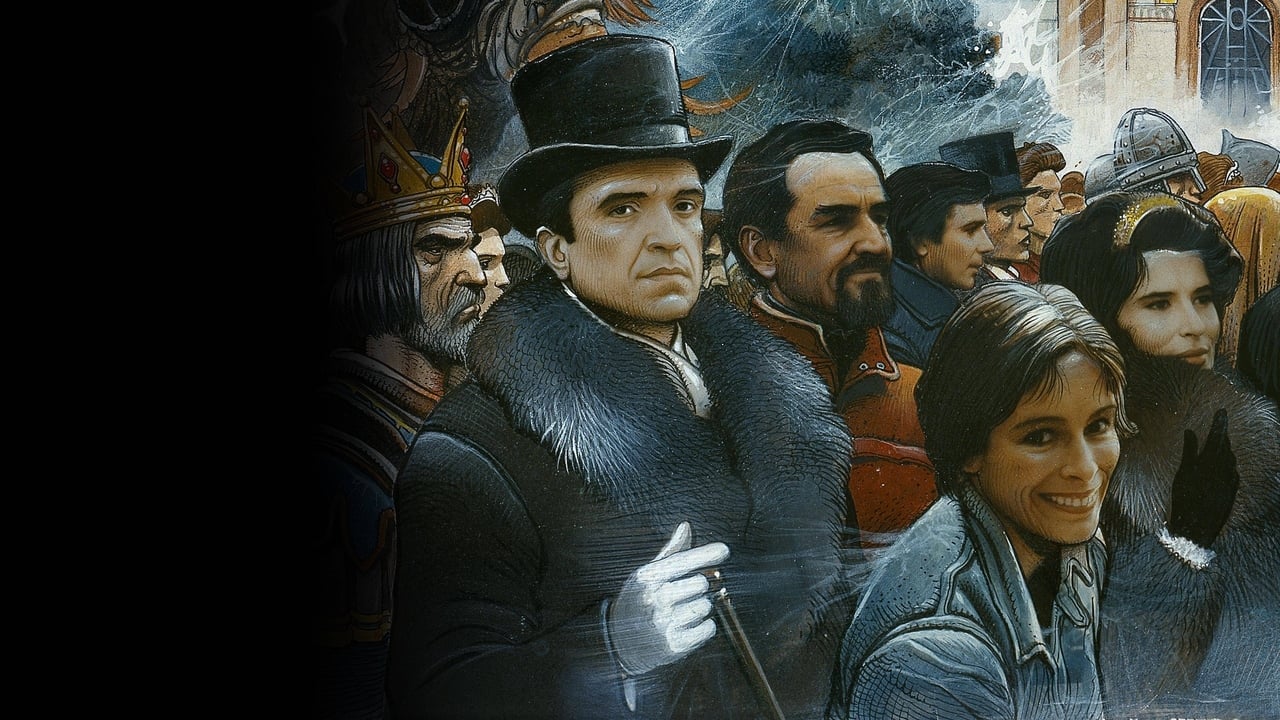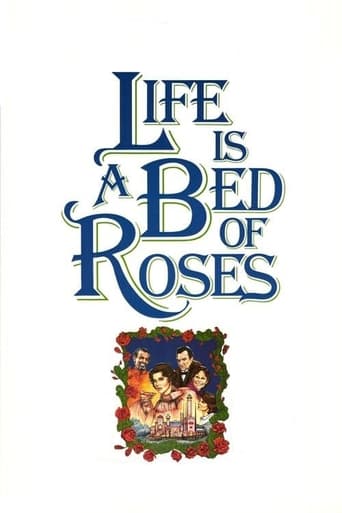

Save your money for something good and enjoyable
... View Morejust watch it!
... View MoreBetter Late Then Never
... View MoreThe story, direction, characters, and writing/dialogue is akin to taking a tranquilizer shot to the neck, but everything else was so well done.
... View MoreResnais explores the concept of Utopia in three, intermingled timelines in this musical comedy. Actually, the film is so confusingly told that I had to read up on it a little before understanding it. Generally, though, it's a pretty enjoyable little film. In the modern timeline, a group of educators gathers at a castle at a symposium for alternative education. Geraldine Chaplin makes a bet that she can get the shy Sabine Azema to fall in love with Pierre Arditi. Vittorio Gassman also co-stars in this timeline. Another plot line follows the builder of that castle (Ruggero Raimondi) as he attempts to create a Utopian society after WWI. Fanny Ardant co-stars in that timeline. The third section is kind of an operatic fantasy. The production design is really neat, but I was at a loss as to what was going on there until very near the end of the film, where it became a bit clearer. The film is occasionally a musical, and the music is pretty decent.
... View MoreThis was a resounding flop when it came out, both in France and abroad. It's still not appreciated even among fans of Resnais who have come to terms with his lighter side. It's not hard to see why. Coming from the man who gave us Marienbad, this seems like a small narrative essay packed inside of lightweight fantasy in the Woody Allen mode. A matter of silly adolescent frolicking instead of deep mysterious passion.Fair point. But here's something else.Resnais broadly speaking loves two things. On one hand theater, movies, architecture, comic-books (he is an avid collector) - so by extension, the color, frill and artifice of appearance. And you can see that in his actual films, almost without exception tuned to musing, fabrication and some form of theatricality.His primary interest, however, is extending this notion of constructed realities to the deep end of the architecture of self. In simple terms, he attempts to show that what we largely accept as abstract propositions about ourselves (thought, memory) are internally the same fabrication as anything we build in life, governed by exactly the same mechanism.Cinema is the best medium to inherit the endeavor - not only is every image (as is every thought) staged in the mind's eye, not only does the camera as internal narrator shuffle and slide through successive planes of narrative, but external space (the library in Tout le Histoire, the museum in Hiroshima, the hotel in Marienbad, the capsule in Je t'aime, etc.) mirrors our experience of internal space, the faculties of consciousness.Add to these the lavish château somewhere in the Ardennes of this film.There are three overlapping narratives centered on that place. One is romantic myth about the baby son of a king who grows up to slay the dragon and rescue the maiden. The second is about an architect in the 1910's whose plans to build the château and marry his loved one are interrupted by WWI. The third is set in present times, about a conference of intellectuals who convene there to discuss new educational (narrative) principles.The main narrative thrust across all three is that there is no harmony in the workings of the soul, though we construct artifice to that effect. There is a dialogue of sorts this kicks off within the film. Look at what Resnais does.All three narratives centered on artifice and ritual. Myth, glassy theatric decor, operatic singing in the first. Miniature model, actual building and ritualized experiment that later takes place there in the second. Another miniature landscape, the conference and romantic plot (which is not spontaneous but manipulated by a third party, artificial) in the third.And the point repeated across all three is what? But of course the forcible attempt to create harmony, which is to say forcing nature to conform to what the mind thinks it ought to be.Of the three, only the myth is happily resolved, the obvious product of fabrication. The architect conducts an experiment that supposedly is going to make everyone happy and in harmony with the world, but all the guests drink the miraculous potion except the love of his life; love cannot be manipulated to happen.The conference erupts in violent disagreement over the preferred educational method. The romantic thrysts end in unpredictable notes, not at all according to the plan of the woman who has manipulated the plot - played by Geraldine Chaplin, whose father made his cinematic fortunes by peddling artificial harmony and miraculous love.The point is that there is no harmony outside the stories we devise to attempt it, no single method to navigate the landscape of life. Being interested, alert, spontaneous and involved in its exploration, like the teacher is interested in the miniature landscape laid before the educators, is the only way.This is good stuff, folks, showing wisdom. It will not immediately win you over, because it's not a rich swim like early Resnais or Tarkovsky. It is whimsical, but not in the confrontational way of Greenaway, a bit chaste. The eye does not move walls of perception around, as in Welles. Unlike Inception, it explains in light ripples. So be it. I count it next to Draughtsman as among the most intelligent in film.
... View MoreA utopian experiment around the time of World War 1 is contrasted with an educational concourse/seminar of today. Both experiments look at idealistic solutions for the problems humans have of living with one another. Both experiments are "polluted" by idealism itself and by the very real human beings who take part in the experiments. Making a movie about philosophy is strange enough.... but this movie is a MUSICAL... and the music is lovely. The most interesting thing is that the tragedy and madness of the first experiment is contrasted with the comedy of the failure of the second experiment to make a broad statement about the inevitable failure of idealism in a world of fallible human beings. This technique is similar to Griffith's cutting in Intolerance.... Even as you laugh at the comedy, you can see how easy it would have been to fall into tragedy. The film is a perfect delight that sticks with you. The two utopian experiments are contrasted with a medieval story that seems to comment on the other two stories....In fact, the medieval story is an idealistic view of the world as the children see it. So there are, in fact, three ideals contrasted. This makes for a very complicated structure which you may ignore if you just want to watch the interactions of the characters or listen to the delightful music.
... View MoreWatching the first few moments, you realize it's going to be a parody - and certainly it *is* a parody, but I'm not sure of what (a fairy tale? an opera? a Hollywoodian C-movie? - if there was something like that), and I can assure you it's not worth watching. It's simply a pointless film (cf. a good parody is everything but pointless), with pretentious, shallow speeches of extremely sketchy characters. It's like a commedia dell'arte. Or better, it's like a botched commedia dell'arte. And the score... sung in an intentionally incompetent way (something Greenaway will use much more efficiently), it *is* painful to listen to (unless one wears some sate-of-the-art earplugs, haha). Go for quality movies (e.g. A. Mitta's How Czar Peter the Great Married Off His Moor, 1976) and steer clear of this mistake.
... View More